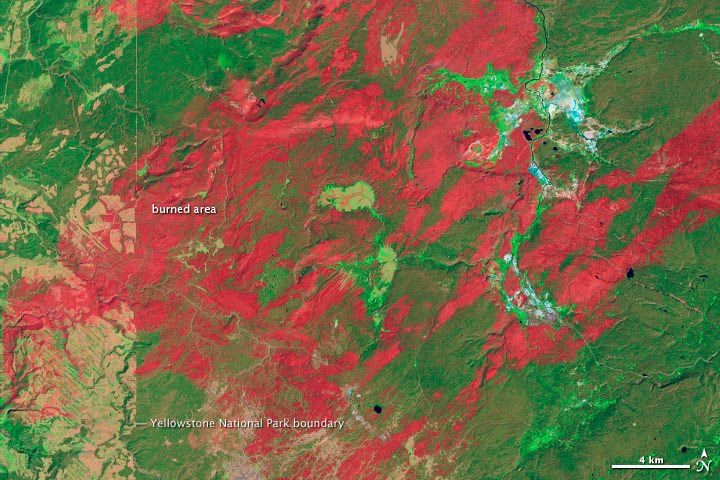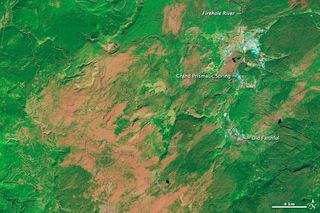
How Yellowstone Recovers from Forest Fires

From NASA’s Earth Observatory
The high mountain forests of western North America need fire. Fire returns nutrients to the soil and replaces old stands and ground debris with young forest. Intense fires are a characteristic of the conifer forests, though they occur infrequently—once every 100 to 300 years.
The year 1988 brought one of those infrequent, severe fires to Yellowstone National Park. Drought and high temperatures combined to create extreme fire conditions. Fifty wildfires ignited, seven of which grew into major wildfires. By the end of the year, 793,000 acres had burned.

These images, taken by the Landsat satellites, contrast 1989 and 2011. Burned land is deep red in the 1989 image. By 2011, more than two decades later, the scar faded to tan-orange, but it was still present.Immediately after the fire, grass flourished in the ash-rich soil, followed by young trees. The slender saplings were still not dense enough to hide the burn scar. As these images indicate, it takes many decades for a conifer forest to recover to pre-fire conditions.
Sign up for the Live Science daily newsletter now
Get the world’s most fascinating discoveries delivered straight to your inbox.











